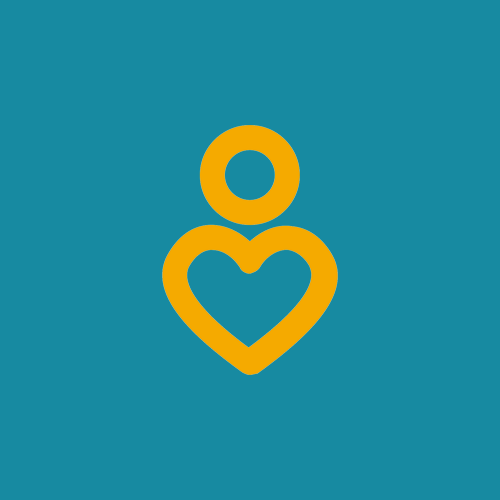Social and emotional wellbeing (SEWB) refers to a process that builds the strength and capacity in children and adolescents to lead a full and productive life, with the resilience to deal with change and unpredictability [4].
The term ‘social and emotional wellbeing’ has been used interchangeably in recent years with mental health, perhaps to subvert the stigma associated with mental illness. Another way of looking at SEWB and mental health is to consider SEWB as a key component of mental health and wellbeing.
SEWB is a means to an end, rather than an end in itself. If children develop good SEWB, they will have positive health and overall wellbeing throughout their lives [6]. It is like the levelness of a table – it’s what makes the table usable and able to function [7].
The term ‘social and emotional wellbeing’ is preferred by Aboriginal and Torres Strait Islander peoples rather than mental health, as it reflects a more holistic view of health. The term recognises their connection to land, sea, culture, spirituality, family, and community; recognising a person’s SEWB is also influenced by policies and past events. The term is also used by individuals from culturally and linguistically diverse backgrounds who may have differing concepts of mental health and mental illness.
The following perspectives are important when considering SEWB [4]:

Whole Child

Thriving rather than simply avoiding negative outcomes

Resilience in the face of diversity

A focus on the child in the present and in the future

In Context
Social wellbeing + emotional wellbeing
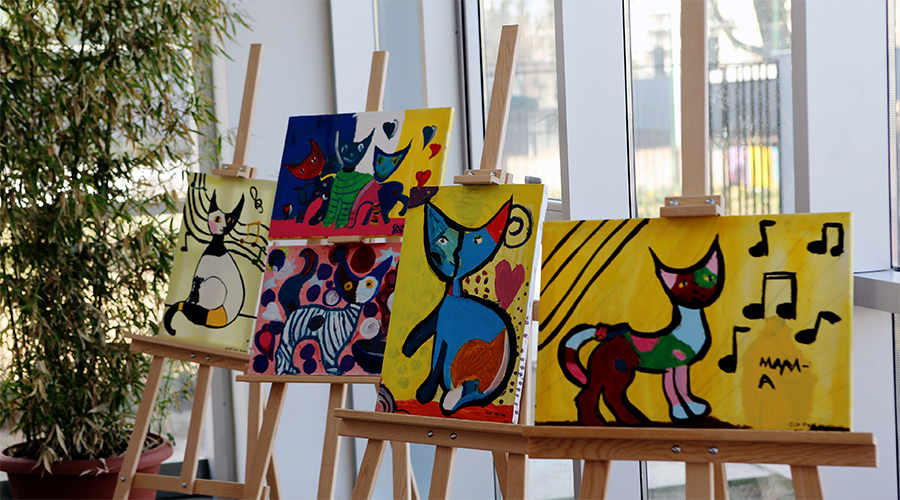
We often speak about social wellbeing and emotional wellbeing at the same time because interpersonal abilities are underpinned by intrapersonal skills [18]; emotions motivate action, helping us understand how we are feeling and influencing others around us. This explains why although emotional and social competence are studied as distinct attributes, they are heavily correlated [19].
Viewed as two separate attributes, emotional wellbeing reflects a child’s ability to recognise, and understand their own and others’ feelings, to express emotions appropriately, and regulate (monitor, evaluate and modify) their emotions [20].
Social wellbeing reflects a child’s ability to make and sustain relationships with adults and peers that are appropriate and beneficial [18].
Social and emotional learning
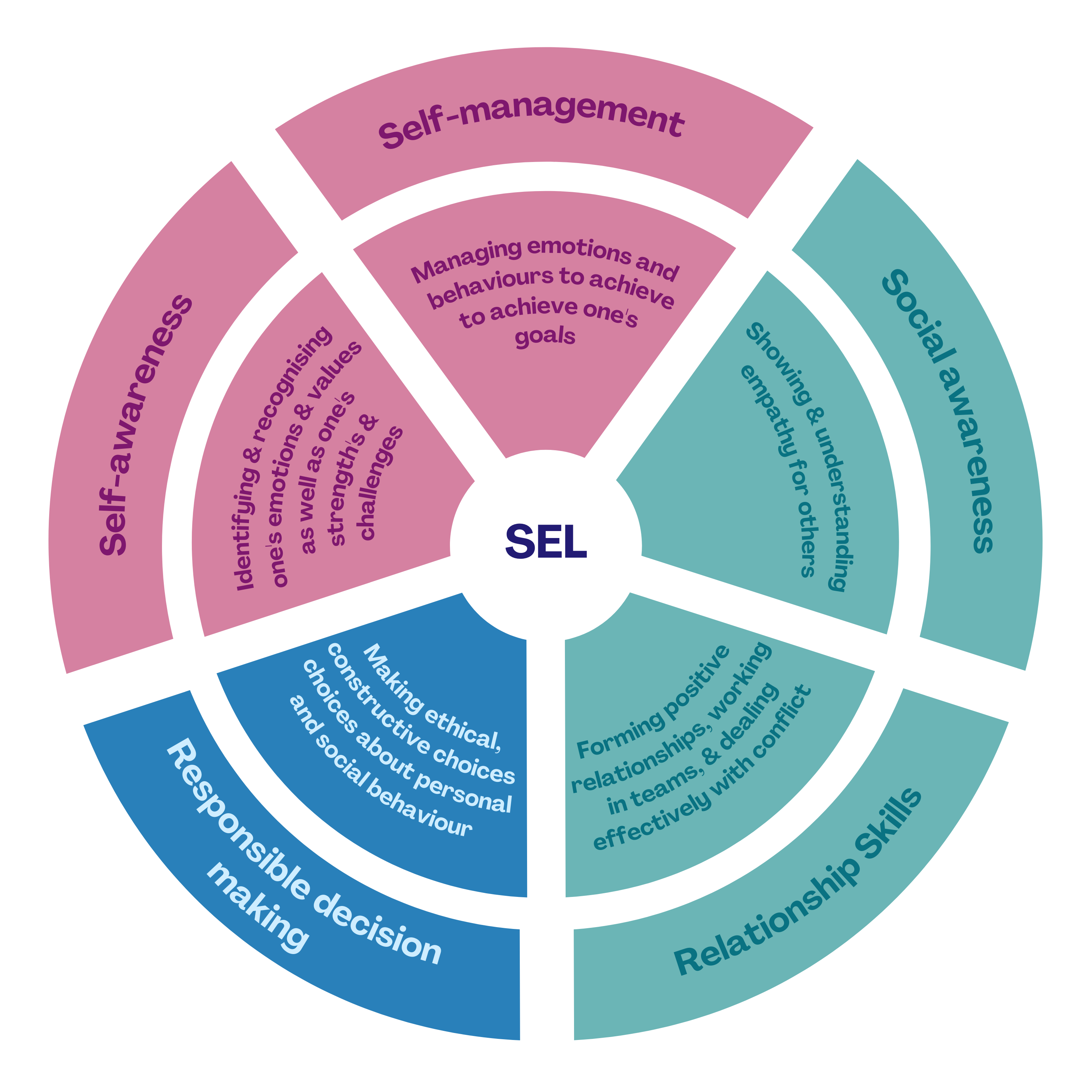
SEWB depends on social and emotional learning. Social and emotional learning (SEL) programs can help students learn the competencies and skills needed to build resilience and effectively manage their emotions, behaviour, and relationships with others.
The Collaborative for Academic, Social and Emotional Learning (the CASEL Framework) identifies five broad headings under which SEL falls [21].
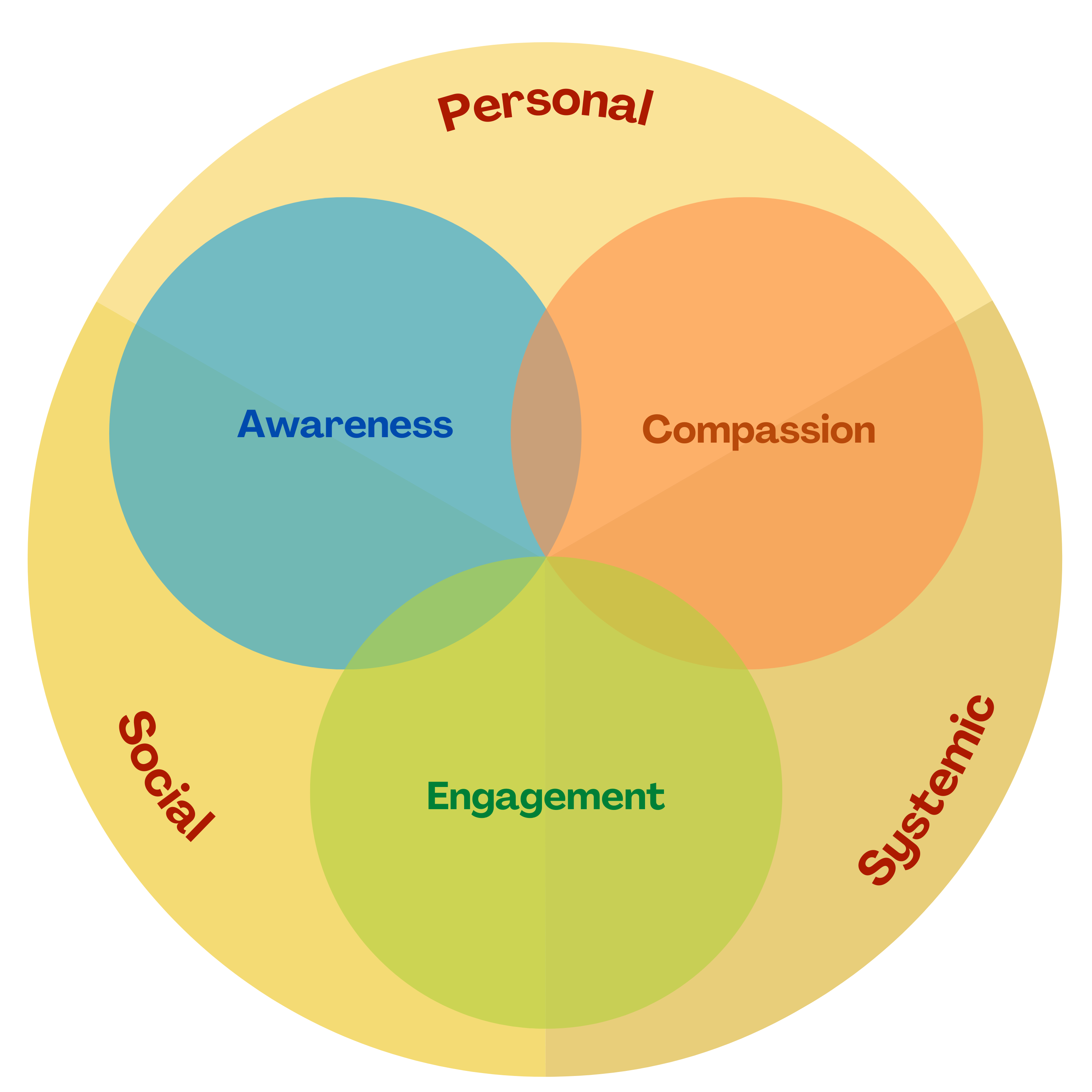
The SEE model is another model explaining social and emotional learning. SEE Learning is fundamentally based on three dimensions, broadly encompassing the types of knowledge and competencies it seeks to foster in students: (1) Awareness, (2) Compassion, and (3) Engagement. These three dimensions can be approached in three domains: (1) Personal, (2) Social, and (3) Systems.
This framework builds on the evidence-based work of SEL. It parallels the model suggested in Goleman and Senge’s The Triple Focus: a focus on self, a focus on others, and a focus on interdependence and systems [22]. The three dimensions of SEE Learning—Awareness, Compassion, and Engagement—relate intimately and are therefore depicted as overlapping. Each contains a set of specific competencies that can be taught individually but are best understood within the context of the whole.
Models that help us understand SEWB
The Social Ecological Model
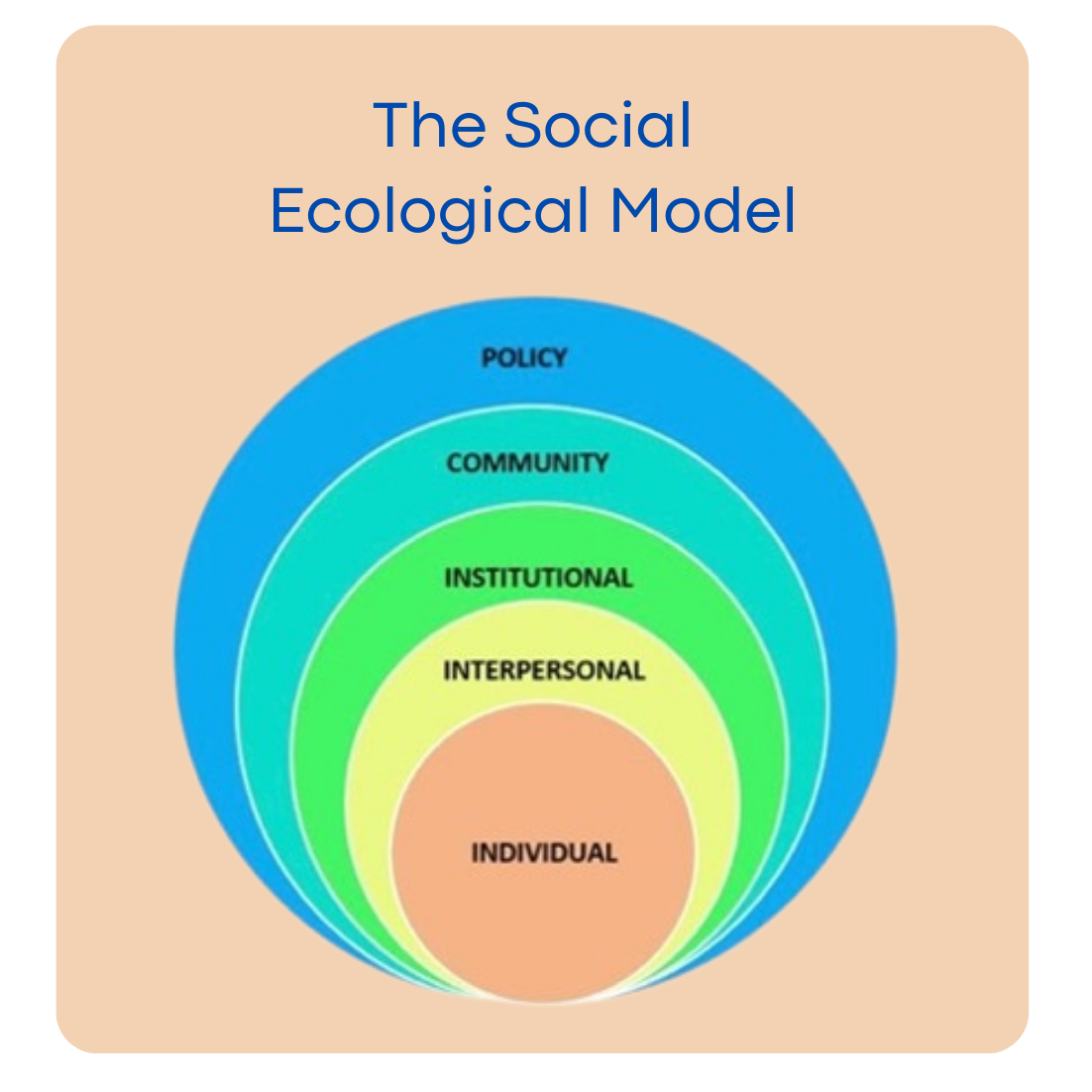
Wellbeing is a complex interplay between individual, relationship, community, and societal factors. The overlapping rings in the model illustrate how factors at one level influence factors at another level.
Indigenous SEWB conceptualisation
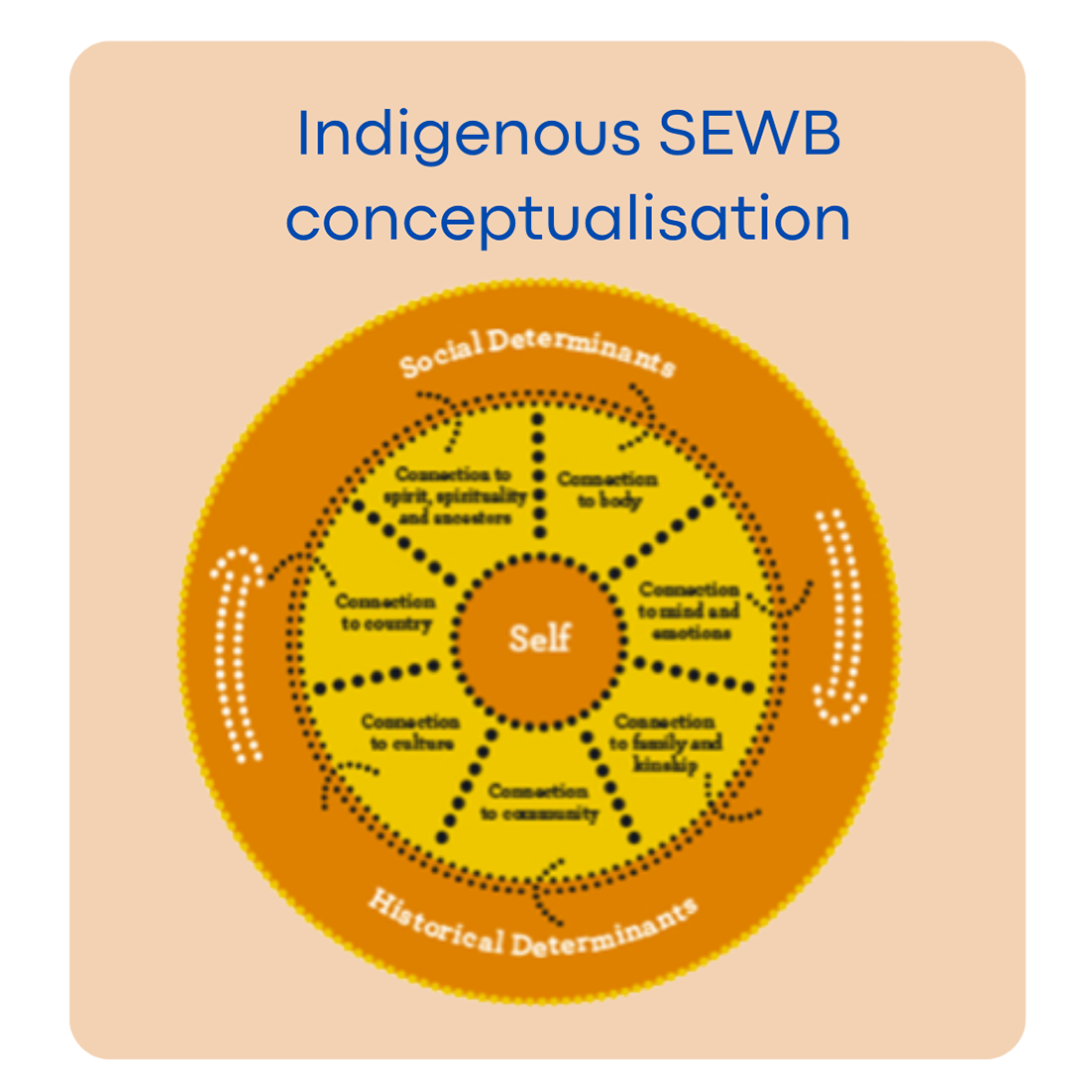
“The spirituality of individuals, families and communities are shaped by connections to body, mind and emotions, family and kinship, community, culture, land and spirituality” [1] pg. 58
Self-determination Theory (SDT) & the Circle of Courage
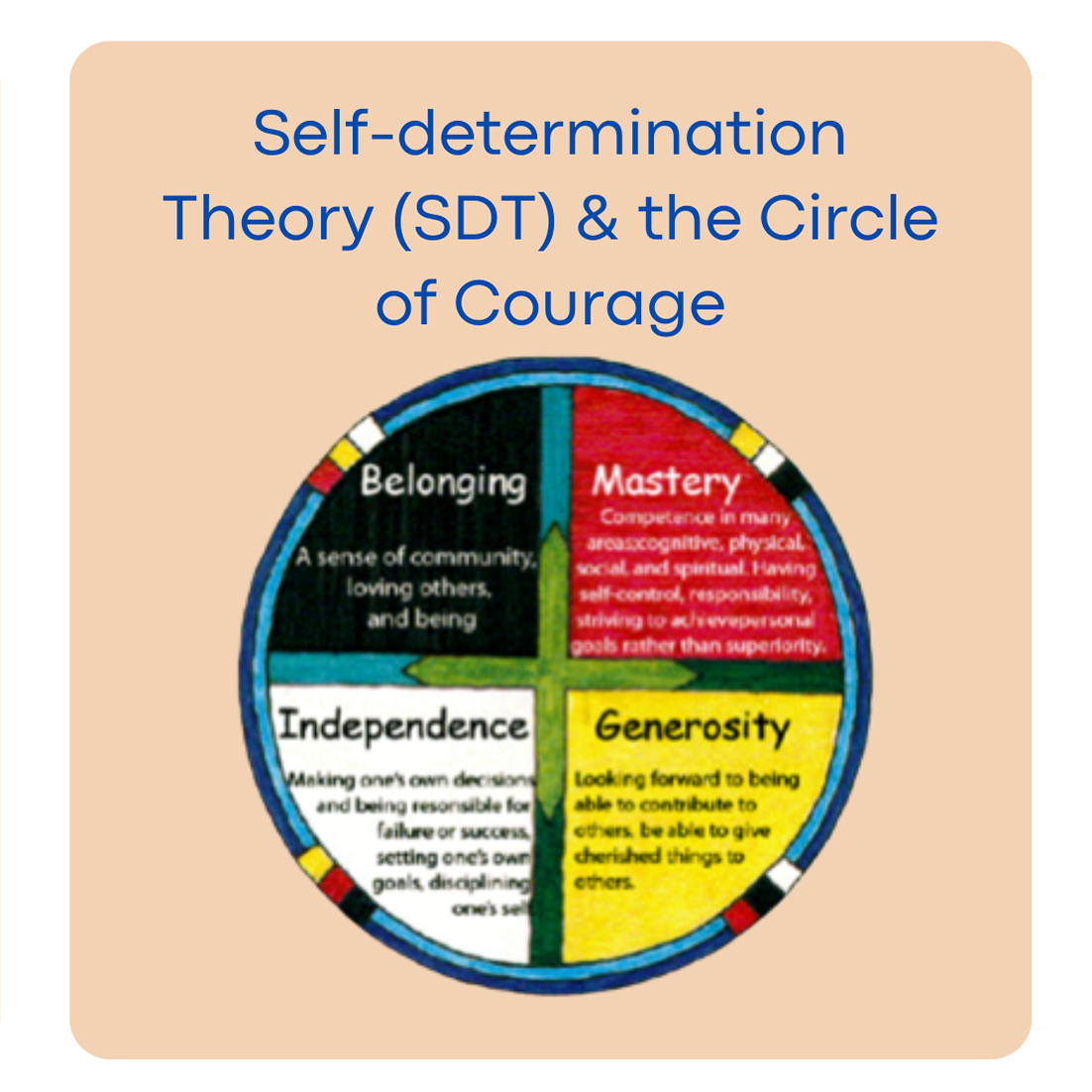
SDT suggests wellbeing is linked to three psychological needs: competence, connection, and autonomy. The Circle of Courage stems from SDT, integrated with Native American philosophies of child-rearing and contemporary resilience research. It includes a further dimension of Generosity.
SEW – Arts model of SEWB
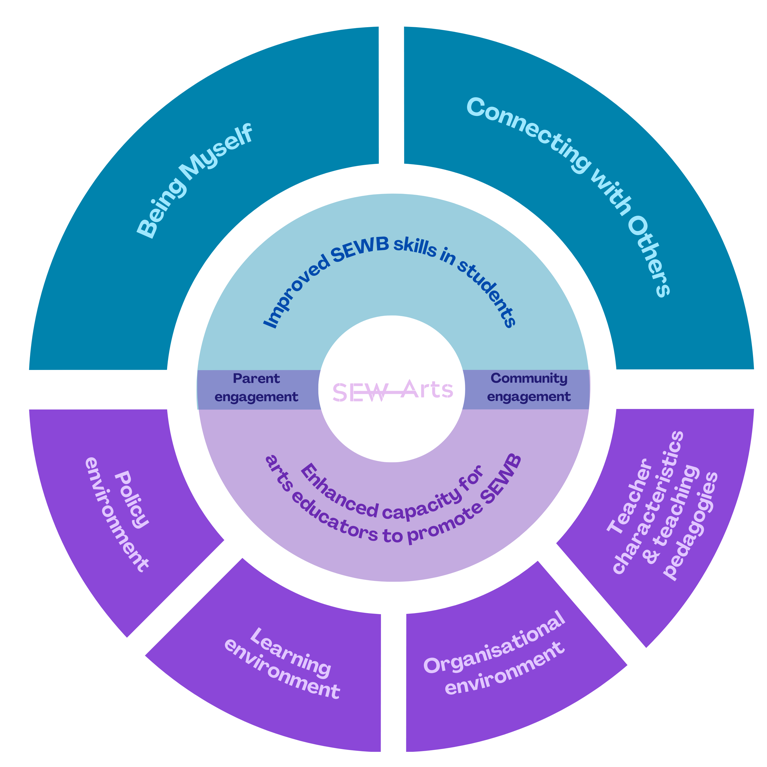
SEW – Arts model of SEWB was developed upon listening to children and adolescents in arts programs describe what they think of as SEWB. Their descriptions were integrated with what arts educators said were the key factors in promoting SEWB in their participants.



